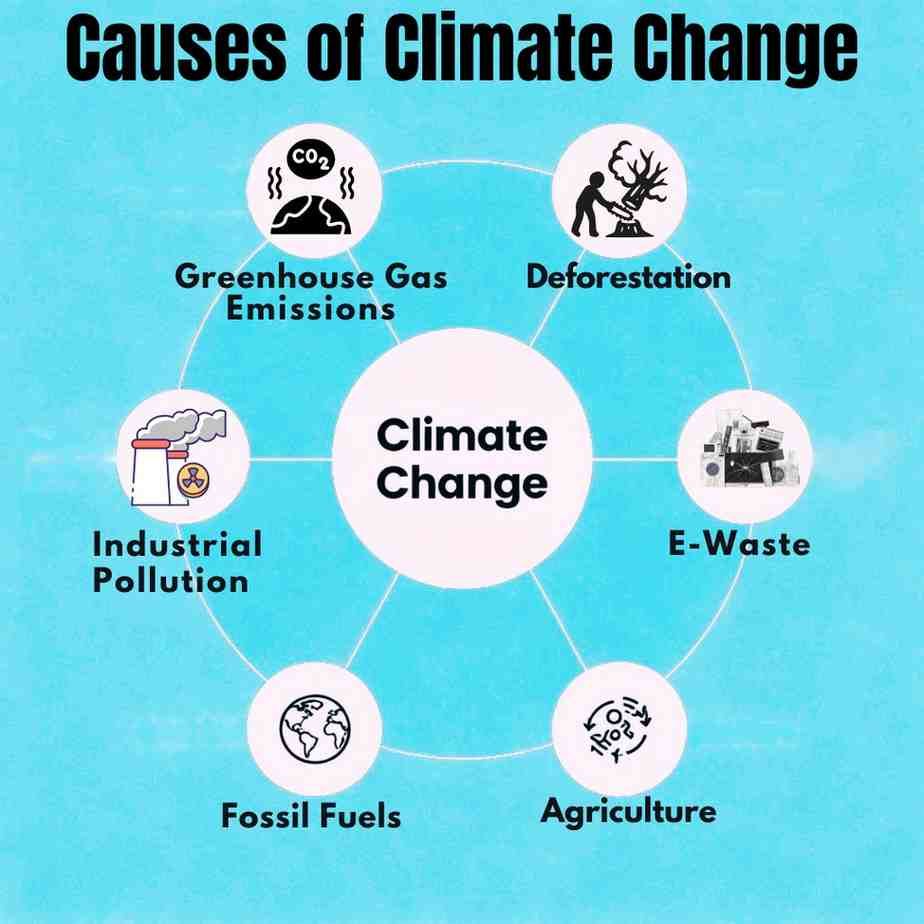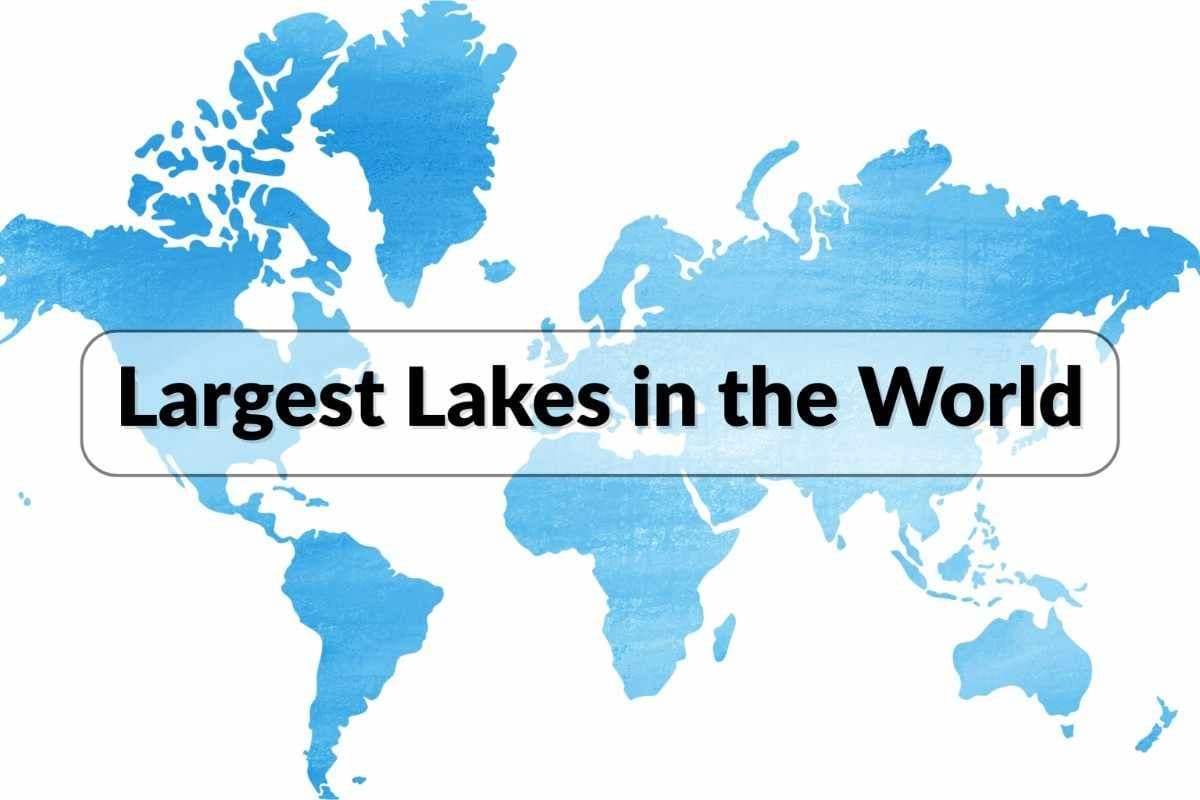Climate Change UPSC Notes: Meaning, Types, Causes & Key Initiatives
Oct, 2025
•4 min read
Climate change is an essential topic for the UPSC Civil Services Examination, primarily under General Studies Paper III (Environment). It assesses your understanding of global warming, causes, effects, and India’s mitigation and adaptation strategies.
Here, we’ll cover the definition, causes, types, evidence, regional and global effects, government initiatives, international agreements, and India’s climate policies.
What is Climate Change?
Climate change is the long-term alteration of temperature, rainfall, wind patterns, and other aspects of the Earth's climate system. These changes may be due to natural internal processes or external forcings (solar cycles, volcanic eruptions), and persistent human-induced changes in atmospheric composition or land use.
Key Facts About Climate Change
- India's average temperature in January 2025 was the second-highest since 1901, 0.98°C warmer than the 1991-2020 average.
- The annual mean temperature increased from 25.05°C in 2001 to 25.74°C in 2024.
- 2024 was the hottest year in India since nationwide records began in 1901.
- Mali and Burkina Faso (African nations) are the hottest countries globally, both averaging 28.3°C.
- Global fossil fuel consumption has more than doubled in the last 50 years.
- Carbon dioxide from human activities is increasing about 250 times faster than from natural sources since the last Ice Age.
What are the Types of Climate Change?
Climate change can be broadly categorised based on its causes and manifestations.
A. Natural Climate Change
Natural factors that contribute to climate change occur without human intervention and have shaped Earth's climate for millions of years.
1. Continental Drift and Plate Tectonics
- The movement of tectonic plates over millions of years alters the physical features of landmasses and water bodies.
- Affects local temperature and environmental factors.
- Contributes to long-term climate variations.
2. Volcanic Eruptions
- Volcanoes release large amounts of carbon dioxide, dust particles, and aerosol droplets.
- Short-term events with persistent long-term effects.
- Can warm atmospheric layers and contribute to global warming.
3. Ocean Currents
- Horizontal wind movements affect natural ocean current flows.
- Cause temperature variations in different geographical areas.
- Influence regional climate patterns.
4. Solar Variations
- Changes in solar output associated with sunspot activity.
- Natural fluctuations in energy received from the Sun.
- Contribute to climate variability over different time scales.
B. Human-Induced Climate Change
The current phase of climate change is primarily driven by human activities, particularly since the Industrial Revolution.
1. Greenhouse Gas Emissions
- Burning of fossil fuels (coal, oil, natural gas) for energy production.
- Industrial processes and manufacturing activities.
- Transportation sector emissions.
2. Land Use Changes
- Deforestation for urban development and agriculture.
- Loss of natural carbon sinks.
- Alteration of local and regional climate patterns.
3. Agricultural Practices
- Livestock farming produces methane emissions.
- The use of nitrogen-based fertilisers releases nitrous oxide.
- Rice cultivation in flooded fields generates methane.
Also read: Bharat Forecast System
Scientific Indicators and Evidence of Climate Change
Scientific evidence for climate change comes from multiple sources and observation methods, providing a comprehensive picture of our changing planet.
1. Temperature Records
- Global average temperature has increased by approximately 1.1°C since pre-industrial times.
- Arctic regions are warming twice as fast as the global average.
2. Ice and Snow Changes
- Faster retreat of Himalayan glaciers affecting water resources.
- Loss of seasonal snow cover and melting of ice sheets.
- Reduction in summer Arctic sea ice extent.
3. Sea Level Rise
- Continued sea level rise throughout the 21st century.
- More frequent and severe coastal flooding in low-lying areas.
- Extreme sea level events that occurred once in 100 years could happen annually by the century's end.
4. Weather Pattern Changes
- Intensification of the water cycle, bringing more intense rainfall and flooding.
- More severe droughts are occurring in many regions.
- Changes in monsoon precipitation patterns affecting regional agriculture.
5. Ocean Changes
- Ocean warming and more frequent marine heatwaves.
- Ocean acidification due to increased CO2 absorption.
- Reduced oxygen levels are affecting marine ecosystems.
Also read: Coral Reef Bleaching and Conservation
Causes of Climate Change
Climate change results from both natural and human factors, with human activities being the dominant driver of current changes.

1. Fossil Fuel Combustion
- Coal-fired power plants for electricity generation.
- Oil consumption for transportation and heating.
- Natural gas use in industrial processes and households.
2. Industrial Activities
- Manufacturing processes release greenhouse gases.
- Cement production contributes significant CO2 emissions.
- Steel and iron production require high energy inputs.
3. Deforestation and Land Use Change
- Clearing of forests reduces natural carbon storage.
- Agricultural expansion leading to habitat loss.
- Urban development is altering local climate conditions.
4. Agriculture and Livestock
- Cattle and livestock produce methane through digestion.
- Rice paddies generate methane in anaerobic conditions.
- Use of synthetic fertilisers that release nitrous oxide.
5. Waste Management
- Landfills produce methane from organic waste decomposition.
- Poor waste management practices are increasing emissions.
- Lack of proper recycling and waste reduction measures.
Adverse Effects of Climate Change
Climate change impacts are already visible across the globe and are expected to intensify with continued warming, affecting both natural and human systems.
- Heat-related deaths in India reached 733 in 2024, with 37 cities exceeding 45°C; 57% of Indian districts face a high heat risk.
- Wheat yield projected to decline 19.3% by 2050 and 40% by 2080; rainfed rice yields to drop 20% by 2050 and 47% by 2080.
- The 2024 monsoon recorded 2,632 very-heavy rainfall events; India's drought-prone area increased 57% since 1997.
- High-income nations are responsible for significant biodiversity loss through outsourcing agricultural and timber production to other countries.
- Biodiversity loss in all species and ecosystems linked to humans; five primary factors: habitat alteration, resource exploitation, climate change, invasive species, and pollution.
UPSC Prelims PYQ
QUESTION 1
Medium
One of the following regions has the world's largest tropical peatland, which holds about three years worth of global carbon emissions from fossil fuels; and the possible destruction of which can exert detrimental effect on the global climate. Which one of the following denotes that region?
Select an option to attempt
International Efforts to Mitigate Climate Change
Global cooperation is essential to address climate change, with various international agreements and frameworks guiding collective action.
1. Paris Agreement (2015)
- Signed by 196 parties to limit global warming to well below 2°C above pre-industrial levels.
- Preferably limit temperature increase to 1.5°C.
- Countries submit Nationally Determined Contributions (NDCs) every five years.
2. United Nations Framework Convention on Climate Change (UNFCCC)
- Established the foundation for international climate negotiations.
- Provides the framework for the annual Conference of the Parties (COP) meetings.
- Facilitates discussion on mitigation, adaptation, and climate finance.
3. Intergovernmental Panel on Climate Change (IPCC)
- UN body established in 1988 to assess climate science.
- Produces consensus-based reports for countries.
- Provides a scientific basis for policy decisions.
4. Global Emissions Reduction Targets
- Need to reduce emissions by 43% by 2030 compared to 2019 levels.
- Aim for net-zero emissions by mid-century.
- Current policies are projected to lead to 3.2°C warming by 2100.
India's Efforts to Mitigate Climate Change
India has emerged as a leader in climate action among developing nations, implementing comprehensive policies and programs to address both mitigation and adaptation challenges.
- India achieved 50% non-fossil fuel installed power capacity in 2024, five years ahead of the 2030 target; renewable energy capacity reached 247.30 GW by September 2025.
- National Action Plan on Climate Change (NAPCC), launched in 2008 with 8 missions, continues to guide India's climate and sustainable development goals.
- The emissions intensity of GDP reduced by 36% from 2005 to 2020; the forest carbon sink increased to 2.5 billion tonnes by 2024, showing steady growth in carbon sequestration efforts.
- India is the first G20 country to meet Paris Agreement targets on time; it launched Mission Mausam with a budget of Rs. 2,000 crore (2024-2026) for advanced climate and weather forecasting.
- Rs. 847.48 crore sanctioned under the National Adaptation Fund for climate resilience projects in 27 States and Union Territories.
UPSC Mains Practice Question
Evaluate the role of the Climate Change Performance Index (CCPI) in assessing India’s progress toward renewable energy transition. (250 Words)
Evaluate Your Answer Now!Way Forward
Addressing climate change effectively requires coordinated action across multiple sectors, innovative financing mechanisms, and strong international cooperation.
- Implement a decentralised climate action framework with localized governance.
- Invest in low-cost, indigenous technologies for climate adaptation.
- Integrate artificial intelligence and machine learning for improved predictions.
- Prioritise adaptation investments in vulnerable sectors like agriculture and water resources.
Achieve your UPSC dream with SuperKalam, your personal AI mentor providing instant Mains answer evaluation, PYQ practice, and unlimited Subject-wise MCQs.
Start learning smarter today!


